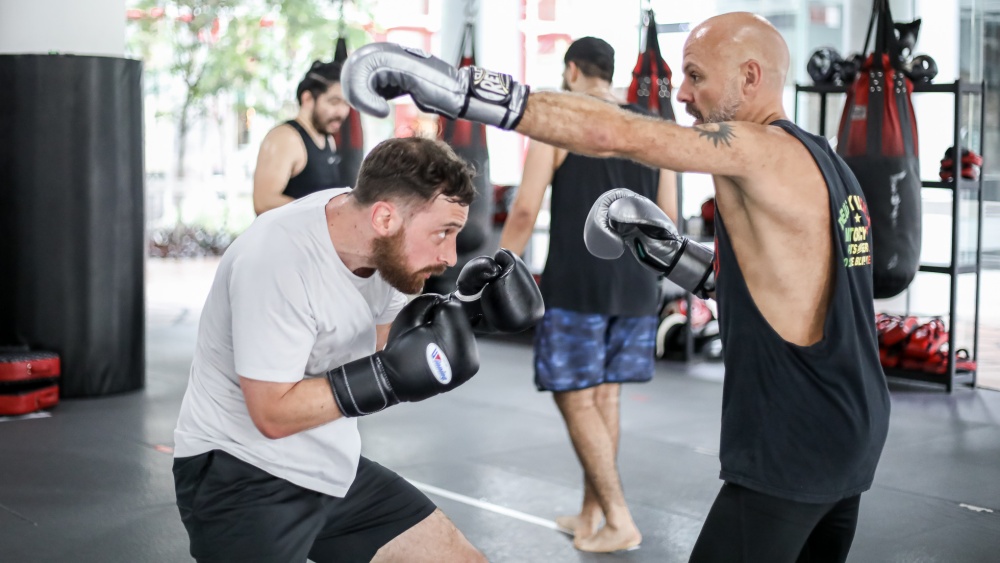A boxing match is typically fought at varying levels of intensity. It is extremely rare that a fighter can just go all-out from start to finish without losing steam somewhere in between. There is always a level of energy management and strategy that comes with fighting in the ring.
Inexperienced fighters will come storming out of the gates, looking to put everything into each shot. They are huffing and puffing by the middle rounds, and completely depleted by the end of the fight, if they even make it that far. More seasoned boxers know when to turn the switch on and off, and do little things to help them utilize their stamina in an efficient manner.
If you’re at that stage where you’re just about to begin sparring or fighting, you will want to learn how to manage your energy expenditure wisely. Of course, being in great condition certainly helps, but also knowing how to conserve stamina for crucial moments could be essential to victory.
We’ve come up with a few pointers on how to make sure you have enough fuel in the tank to last until the final bell. Check these tips out and try to apply them to your game.
Today, Evolve Daily shares five tips to become more energy efficient in the boxing ring.
1) Breathe and exhale while punching
Proper breathing is so important in explosive combat sports and various martial arts disciplines. You have to make sure the blood in your veins carries enough oxygen to supply your muscles. In this case, knowing when to inhale and exhale in fights is important information, and will help you prevent the early onset of fatigue.
In the thick of a boxing match, you will want to breathe as you normally would, and take in as much oxygen as you can. During your combinations or when throwing punches, the general idea is to inhale a quick breath just before a punch and exhale as you throw the punch. This will depressurize your airways, and allow you to deliver much-needed oxygen to your arms and legs.
During training, you can perform different kinds of cardio exercises that encompass aerobic and anaerobic activity. This will train your lungs to handle the quick processing of oxygen.
Master the art of breathing in a fight, and you can better manage your energy levels, as well as prevent muscle fatigue.
2) Cut off the ring
Against particularly elusive opponents, the worst thing you can do is to follow them around the ring. Following an opponent around the ring will have you covering more of the canvas than is necessary, which in turn, uses up a lot of energy.
Don’t chase your opponent. Instead, practice ring generalship and limit your opponent’s movement. Anticipate where your opponent is headed, and move in a lateral direction to block his or her path. This is a technique called “cutting off the ring.”
However, you don’t want to just use movement by itself. You should throw combinations while moving in order to effectively cut off the ring. Your offense will serve as a deterrent, and your opponent will have a hard time avoiding you.
3) Superior conditioning is an advantage

As previously mentioned, superior conditioning is a real advantage in boxing. Sometimes, conditioning is enough to win fights, especially at the lower levels. At the elite levels, strength and conditioning is a requirement. That’s why professionals work very hard to be in shape before a fight.
When you’re just starting out, however, you will want to build your aerobic endurance. This can be done by performing different boxing drills like shadow boxing, bag work, good old roadwork, and the like.
You also want to build your anaerobic endurance and push your lungs to the limit. This can be achieved through drills like the agility ladder, skipping rope, and High-Intensity Interval Training (HIIT). Intense sparring sessions will also help you grow accustomed to the ebb and flow of a real fight, so make sure to get those rounds in.
4) Utilize the clinch
Getting tired and being depleted of energy in a fight, however, is very real. It’s likely that you experience being drained at some point in every match. Fortunately, there is a way to rest and recover in the heat of battle, and that involves utilizing the clinch.
Clinching in boxing is a grey area. It can be both an advantage and a disadvantage. It’s a disadvantage in the sense that your opponent could use it for the very same reasons as you.
On your part, you can utilize the clinch to stifle an overly aggressive opponent, and force a break in the action, especially if you aim at catching your breath and getting a few seconds of rest between each combination. It can also be used to frustrate and sap the energy from your opponent.
Be careful though, because excessive clinching is an illegal tactic in boxing and could cause a point deduction. Still, use the clinch wisely in order to manage your energy expenditure.
5) Stay loose

Last but not least, stay loose and on the balls of your feet. Keep from being too tight and stay light, so as to help you move and flow easier in the ring. If you’re too tight, it causes a massive buildup of lactic acid in your muscles and will draw the stamina from your body. You could tire very easily if your muscles are too tight.
You can relieve some of that tension with the tips stated above like breathing properly and using the clinch. But another really important thing is to remain calm, relaxed, and composed. Clear your mind and don’t overthink things. Like Bruce Lee once said, “flow like water.”
Practice these five tips to become energy efficient with your boxing.
You may also like:
















